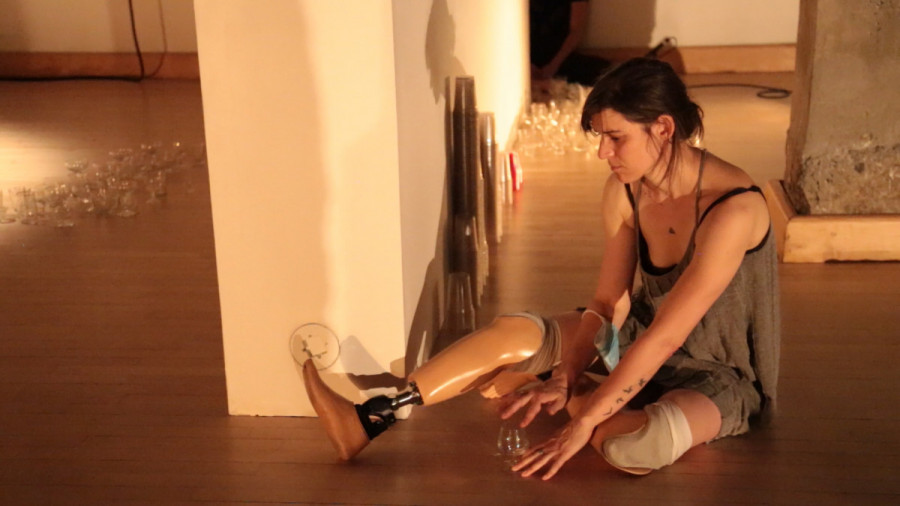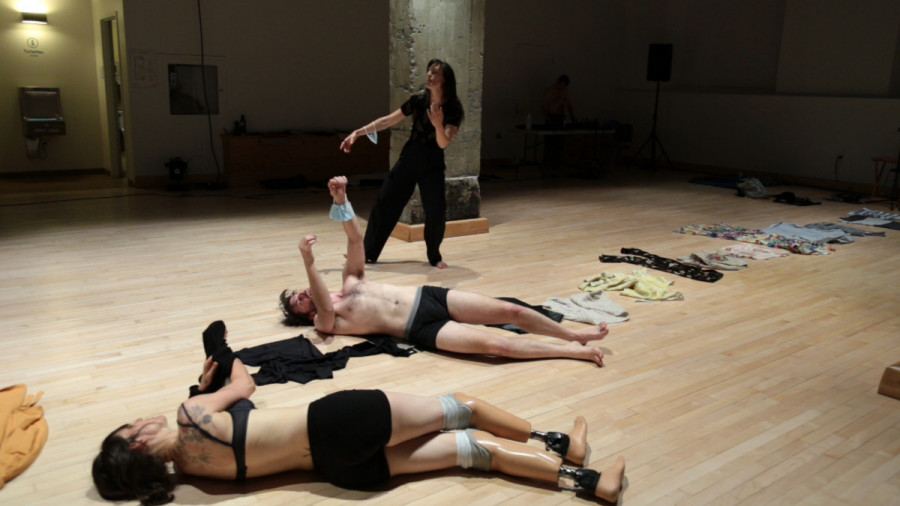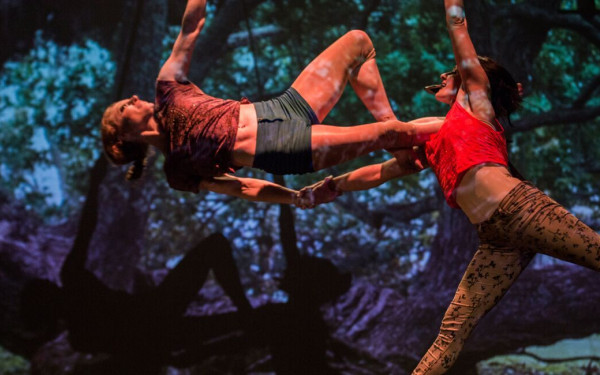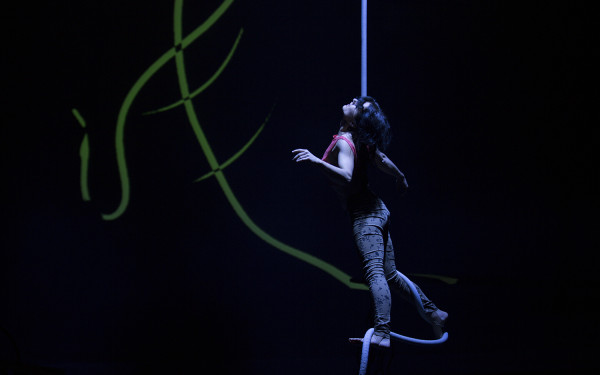‘Reimagine the World’: An accessible post-pandemic theatre world
The MAI opens its doors for a summer residency focusing on artists living with visible and invisible disabilities
Montréal, arts interculturels is a humble cultural centre with grand ambitions: to champion inclusivity, promote intercultural art for diverse audiences, and facilitate dialogue between artists and the public.
Its summer residency, Et si on réimaginait le monde II (Reimagine the World), which ran from April 26 to June 4, featured artists living with visible and invisible disabilities, as well as artists living with forms of neurodivergence.
At the end of April, artists from four companies were invited to a paid residency funded by the MAI. Over the course of six weeks, artists inhabited a space for up to 10 days at the cultural centre, working and experimenting with ongoing projects in their respective disciplines.
Reimagine the World is the second of its kind. In 2019, the program began as a residency aimed at providing a platform and working space for artists and performers living with disabilities. The name was inspired by John Lennon’s “Imagine,” with a mission for greater inclusivity in the arts.
Michael Toppings, director of the MAI, said that working as an administrator at The Link 13 years ago helped reinforce his passion for administration in the arts. Since then, Toppings has worked at the MAI for over 11 years.
In 2021, after reevaluating an arts space that shut down due to a raging pandemic, Toppings began to think about what the publicly-funded cultural centre’s responsibility was in the midst of a global crisis. While most galleries closed and decided to wait it out, Toppings was determined to enliven the MAI and bring its core mission to the forefront.

“I think it’s important for any art centre that’s publicly funded—especially in the time of a pandemic—to rethink how [its] space is being used, who’s getting access to it and what’s happening,” said Toppings.
Audrey-Anne Bouchard, an interdisciplinary artist and part-time faculty member of Concordia University, is currently directing and creating an inclusive theatre experience for audiences living with vision impairment or vision loss. Along with other artists, Bouchard is developing Fragments, a multimedia performance exploring themes of memory through multi-sensorial experiences.
“We’re developing a form of work that does not need audio description because we’re inviting the spectator [into] the show, in [an] immersive experience,” said Bouchard. “So it’s not adapted, it’s conceived to be accessible.”
Part of the MAI’s residency also continues to strive to give visibility to invisible disabilities. Some of the artists live with epilepsy and other forms of neurodivergence.
“I think what’s interesting that the MAI pointed out is that the residency is for artists with visible or invisible disabilities. In my case, my disability is not always visible,” said Bouchard, who lives with a vision impairment. “So you know, maybe as [members of] the general public, to keep in mind that we don’t know if the person sitting beside us in the theatre has different abilities or disabilities.”
For some artists, continuing to create with the infusion of diverse bodies is, in itself, an act of revolution. Rather than focusing their works on those living with disabilities, performances include dance and movement with the design of diverse bodies in mind.

Corpuscule Danse, founded in 2000, has led the industry in integrated and inclusive dance, exploring movements in diverse bodies for over twenty years. The company worked on developing their latest piece, Cartographie: Les eaux intimes, at a gallery space in the MAI.
Co-artistic director Marie-Hélène Bellavance and choreographer Georges-Nicolas Tremblay intend to immerse the audience in the performance, reimagining the ways in which non-disabled people and those living with disabilities can interact. Through integrative dance, a diversely-abled audience is immersed in an equally diverse performance set.
“It’s the meeting of different interpretations of movements that are not targeted solely for those who live with disabilities,” said Bellavance. “This meeting of different interpretations is what defines integrative dance. It’s through this perception that genuine inclusion is created.”
Les eaux intimes explores the concept of water, tracing a map that draws connections between bodies and movements as a dancer-audience collective. It explores water in intimate contexts, transgressing the boundaries between water and its various physical forms.
“It’s kind of, in a way, creating a work environment where my disability is not a disability anymore—it’s a strength.” — Audrey-Anne Bouchard
“We were interested in the connection between people. [We had] the idea of tracing a map of relation and connection [to] the idea of water,” Tremblay explained. “It’s a way to approach the idea of intimacy and collectivity.”
Bouchard and Tremblay are in discussions with Toppings to premiere Les eaux intimes during the 2022-2023 performance season at the MAI.
Toppings reinforced that the MAI is committed to long-term investments of artists, from housing their initial ideas and nurturing development, to production and presentation. The MAI also strives to find life for work beyond its premiere.
The residency ended June 4, but the impact of Reimagine the World outlives the summer.
“The MAI is really breaking new grounds, new territories by putting [these] artists forward,” said Bouchard. “It’s kind of, in a way, creating a work environment where my disability is not a disability anymore—it’s a strength.”
“I think the MAI exists or was formed in order to facilitate the transforming of the invisible to the visible,” Toppings reflected. “In many ways, that’s what we’re all about. It's work that never stops.”

_600_832_s.png)


_600_375_90_s_c1.jpg)

